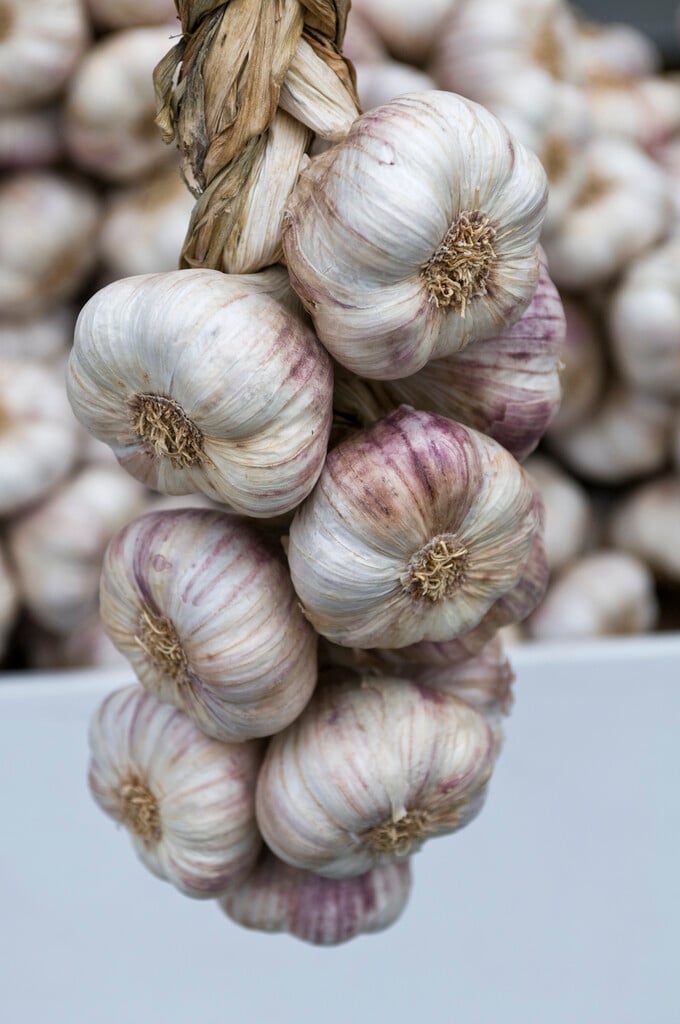Allium sativum var. ophioscorodon 'Lautrec Wight'
garlic 'Lautrec Wight'
A hardneck garlic originating in France, producing purple tinged cloves with a smooth garlic flavour. Hardneck garlic have strongly flavoured cloves, often produce flower stalks, but only store until mid-winter.

Buy this plant
Size
Ultimate height
0.1–0.5 metresTime to ultimate height
1 yearUltimate spread
0.1–0.5 metresGrowing conditions
Moisture
Well–drainedpH
Neutral, AlkalineColour & scent
| Stem | Flower | Foliage | Fruit | |
| Spring | Green | |||
|---|---|---|---|---|
| Summer | Green | |||
| Autumn | ||||
| Winter |
Position
- Full sun
Aspect
East–facing or South–facing or West–facing
Exposure
Sheltered Hardiness
H4Botanical details
- Family
- Amaryllidaceae
- Native to GB / Ireland
- No
- Foliage
- Deciduous
- Habit
- Clump forming
- Potentially harmful
- Skin irritant/allergen. Wear gloves and other protective equipment when handling Pets: TOXIC if eaten - see the HTA guide to potentially harmful plants for further information and useful contact numbers
- Genus
Allium are bulbous herbaceous perennials with a strong onion or garlic scent, linear, strap-shaped or cylindrical basal leaves and star-shaped or bell-shaped flowers in an umbel on a leafless stem
- Name status
Unresolved
How to grow
Cultivation
Garlic grows best in a sunny, sheltered spot with fertile, well-drained soil. If you have heavy soil try growing your garlic in a raised bed or container. To produce good quality bulbs garlic needs a period of cold, so it’s best planted in late autumn or early winter. Divide each bulb into individual cloves and space the cloves 15cm apart, with the tip 2.5cm below the soil surface. Space rows 30cm apart. Harvest from early summer once the leaves have turned yellow.See garlic cultivation, and our video Grow your own garlic: planting and choosing varieties, for further advice
Propagation
Propagate by dividing the bulb into cloves
Suggested planting locations and garden types
- Cottage and informal garden
- Patio and container plants
- Wildlife gardens
Pruning
No pruning required
Pests
May be susceptible to allium leaf miner and onion fly
Diseases
May be susceptible to onion white rot, onion downy mildew and leek rust
Get involved
The Royal Horticultural Society is the UK’s leading gardening charity. We aim to enrich everyone’s life through plants, and make the UK a greener and more beautiful place.